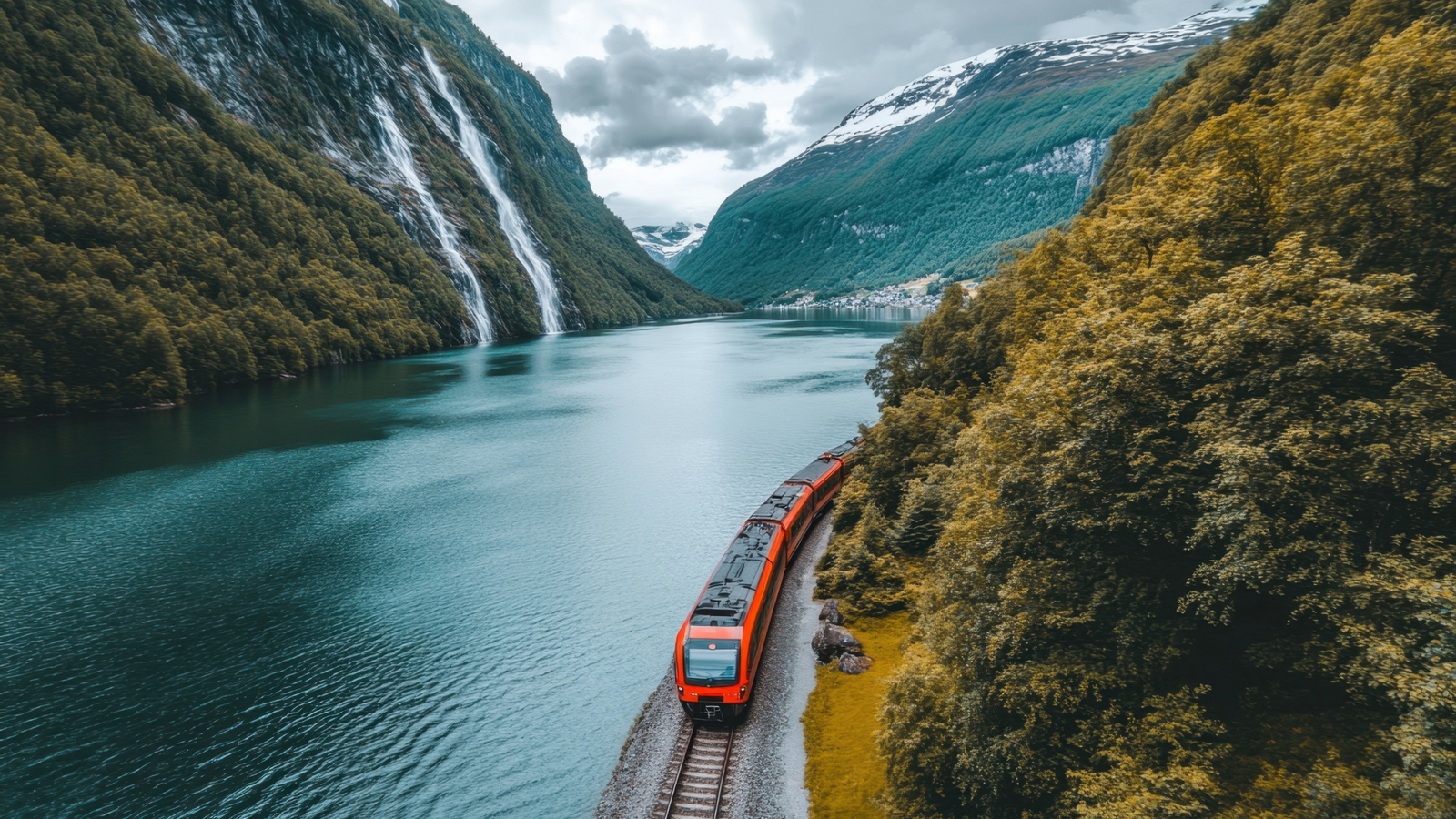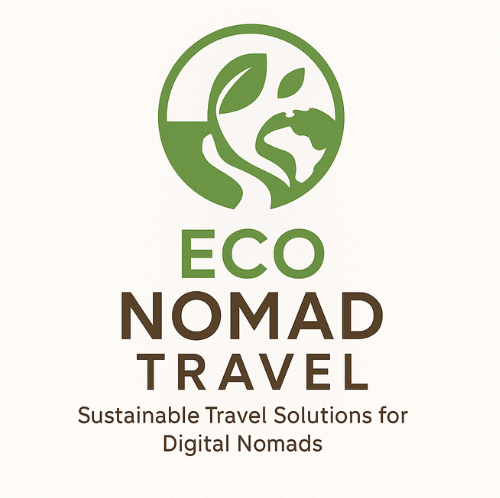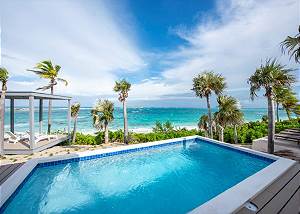
Trip-Chaining for Eco Nomads: Plan Multi-Stop Rail Adventures in Europe (2025)
Transport & Itineraries night trains multi-stop travel slow travel
Disclosure: Links marked to Trip.com, eSIMs, and transfers are affiliate links. We may earn a commission at no extra cost to you. We recommend options aligned with low-impact travel.
Europe in 2025 is entering a golden age of rail, making trip chaining rail adventures 2025 the ultimate way for eco nomads to explore the continent. With the 200th anniversary of the modern railway, a surge in new night train routes, and record investment in electrified tracks, travelers can combine multiple destinations into one seamless overland journey. Instead of flying between hubs, they can let the tracks guide them through diverse cultures, cuisines, and landscapes while keeping their travel low-impact and connected.
Why Trip-Chaining Rail Adventures Matter in 2025
The rail revival and Europe’s 200th anniversary of the modern railway
Two centuries after the first steam locomotives began connecting Europe’s cities, rail is once again at the center of long-distance travel. By 2025, over 30 new international rail routes are either launching or expanding. From the Arctic Circle to the Mediterranean, trains are becoming the default mode for climate-conscious travelers.
Flight-free travel as a climate-conscious choice
Short-haul flights are among the most carbon-intensive journeys on Earth. Swapping them for trains cuts emissions by up to 90%. For eco nomads—travelers who combine work, long stays, and movement—trip chaining is the natural fit. It reduces emissions, eliminates airport stress, and turns travel time into productive or restful time. See also our guide: Train vs Plane Emissions (2025).
What is Trip-Chaining and How Does It Work?
Defining trip chaining for overland journeys
Trip-chaining means linking multiple rail journeys together to form a continuous loop or line across regions. Instead of Paris → Berlin by flight, a nomad might go Paris → Brussels → Amsterdam → Berlin → Prague, working and living along the way.
Benefits for eco nomads and long-term travelers
This method spreads experiences across smaller cities, reduces “travel fatigue” by breaking journeys into manageable sections, and often lowers costs when combined with rail passes. It also supports smaller communities that aren’t flooded with fly-in tourism. For low-impact habits, browse Low-Impact Travel Habits.
Best Multi-Stop Rail Itineraries in Europe (2025)
Northern lights to Mediterranean: Oslo → Berlin → Milan → Rome
A true north-to-south arc. Start in Oslo, ride through Denmark into Germany, work a week in Berlin’s coworking hubs, then sweep south into Italy. The Alpine crossing into Milan remains one of Europe’s most breathtaking train journeys, and Rome offers history with modern connectivity.
Historic capitals route: Paris → Brussels → Amsterdam → Berlin → Prague
This is the “classic loop” for first-timers. Short hops between major capitals make it ideal for balancing sightseeing with work. Night trains between Amsterdam and Berlin save time, while Prague rewards with affordable living and strong digital nomad infrastructure.
Wine & coastlines: Bordeaux → San Sebastián → Lisbon → Porto
This westward trail blends vineyards, surf culture, and Iberian slow living. Rail links across Spain and Portugal have improved, making it possible to combine French gastronomy with Portuguese seaside coworking.
Eastern exploration: Vienna → Budapest → Belgrade → Sofia → Istanbul
The Balkans are finally reconnected by rail. Eco nomads seeking affordability and adventure can now thread together Vienna’s elegance, Budapest’s baths, Belgrade’s nightlife, Sofia’s mountains, and Istanbul’s blend of continents.
Alpine crossings: Zurich → Innsbruck → Salzburg → Ljubljana
A scenic route best enjoyed in autumn. Every leg offers stunning mountain vistas, cozy alpine towns, and some of the cleanest, most punctual trains in Europe. Ljubljana adds a green capital vibe with strong sustainability credentials.
Eco-Friendly Train Operators to Watch in 2025
ÖBB Nightjet expansion
Austria’s ÖBB has become the poster child of Europe’s rail revival. By 2025, Nightjet will cover routes linking Brussels, Paris, Berlin, Vienna, and Milan—with sleek new trains offering private pods and upgraded Wi-Fi. For nomads, Nightjet is not just transportation but a moving hostel and workspace rolled into one. Official Nightjet site.
European Sleeper: Linking Benelux to Berlin & beyond
The crowdfunded startup European Sleeper has already expanded routes between Brussels, Amsterdam, and Berlin. Plans for extensions to Prague and Warsaw mean eco nomads can stitch together central and eastern Europe without stepping on a plane. Official European Sleeper site.
Renfe–SNCF and the Mediterranean connections
The Spanish and French operators are strengthening high-speed links between Barcelona, Marseille, and Paris. For anyone planning a Mediterranean trip chain, these routes reduce travel time dramatically, making long overland journeys smoother and more attractive. SNCF · Renfe.
Green high-speed: Trenitalia, Renfe, and SNCF’s electrified routes
Electrification is the cornerstone of sustainable rail. Trenitalia’s Frecciarossa, Renfe’s AVE, and SNCF’s TGV now run nearly 100% electric on their mainlines. Nomads can cross countries quickly while keeping emissions minimal. Trenitalia.
Night Trains: The Backbone of Trip-Chaining
Why night trains reduce costs and emissions
Night trains are the secret weapon of trip chaining. They combine lodging and travel, slashing costs while reducing emissions by replacing flights. For example, a Paris–Vienna Nightjet journey emits around 28 times less CO₂ than flying the same route.
Comfort levels: couchettes, sleepers, premium cabins
Couchettes (shared bunks) are budget-friendly, while sleepers offer privacy and quiet. The newest cabins even include en suite bathrooms, fold-out desks, and charging points—perfect for digital nomads who need both rest and connectivity.
Booking hacks for night train tickets
Book early for the cheapest fares, especially in summer. Pair a Eurail or Interrail pass with night train supplements to unlock flexibility without overspending. Some routes allow “flex cabins,” letting solo travelers share with others at reduced rates.
Route Planning Tips for Eco Nomads
Balancing speed and slow stops
Trip chaining works best when fast segments are paired with slow stays. Spend two nights in Brussels, then two weeks in Lisbon. This rhythm prevents burnout and deepens your connection with local communities.
Using hubs for flexible branching itineraries
Major rail hubs—Berlin, Milan, Vienna—function as launchpads. From these, you can add detours without disrupting your overall route. For instance, a Vienna hub lets you explore Slovakia, Hungary, or Slovenia with minimal planning.
Avoiding backtracking: circular vs. linear routes
Circular itineraries (e.g., Paris → Brussels → Amsterdam → Paris) work for shorter trips. Linear chains (Berlin → Prague → Vienna → Budapest → Istanbul) are more efficient for long nomadic journeys, avoiding wasted time retracing your steps.
Booking Strategies in 2025
Using Eurail and Interrail passes effectively
Passes remain the backbone of flexible travel. In 2025, digital passes can be managed via apps, eliminating the need for paper tickets. They’re especially cost-effective if you’re planning 5+ train journeys within a month.
When to book in advance vs. last-minute spontaneity
High-speed and night trains require advance booking, sometimes months ahead for summer. Regional trains often don’t—so you can remain spontaneous within countries while securing key international legs early.
Apps and platforms: RailEurope, Omio, Trainline
These platforms consolidate timetables across countries, but for the most up-to-date info, local rail operators’ apps (ÖBB, SNCF, DB Navigator) remain the most reliable. Many now offer real-time delay notifications and seat upgrades on the fly.
Packing Guidance for Multi-Stop Rail Travel
Backpacks vs rolling luggage
Backpacks are better for navigating crowded platforms, especially in older stations without elevators. If you prefer wheels, choose a compact rolling case that fits overhead racks, since not all trains have luggage storage.
Tech for train life: power banks, hotspots, eSIMs
Not every train guarantees working Wi-Fi. A large power bank, universal adapter, and mobile hotspot with an eSIM give peace of mind. Some nomads even carry foldable solar panels for longer off-grid journeys.
Comfort add-ons: sleep masks, travel pillows, collapsible bottles
Train life is easier with small comforts. A good sleep mask and pillow make night trains restful. A collapsible water bottle saves space and reduces plastic waste—most stations now have refill points.
Gear tip: Keep your data stable with an eSIM on long legs. Try Airalo or Yesim. For late arrivals, pre-book a Welcome Pickups transfer so you skip taxi lines.
Digital Nomad Essentials on the Rails
Wi-Fi realities: working on the move
High-speed trains in France, Italy, and Spain have reliable Wi-Fi, but long-haul routes across Eastern Europe remain patchy. Plan offline work (writing, editing, coding) for weaker stretches.
Coworking near major hubs
Cities like Berlin, Lisbon, and Vienna now offer day passes at coworking spaces near train stations. Nomads can hop off, get a productive workday in, and continue their trip chain without losing rhythm.
Balancing work, rest, and transit
Trip chaining isn’t about racing. The art lies in aligning work sprints with slow stops, then using transit days as built-in downtime. Treat trains as part of your workspace, not just transport.
Sustainability Gains of Rail vs Air Travel
Emission comparisons: trains vs short-haul flights
On average, a train journey in Europe emits 14g of CO₂ per passenger kilometer, compared to 285g for flights. Over a summer of travel, the difference is staggering—enough to power a household for months. For deeper context on habits, see Sustainable Travel Tips for Eco Nomads.
Why staying longer in fewer places matters
Trip chaining naturally encourages longer stays. Instead of jetting for weekend breaks, travelers slow down, spending two weeks in one city before hopping to the next. This reduces strain on local infrastructure while deepening cultural immersion.
Challenges of Trip-Chaining Rail Adventures
Delays and strikes
Rail is resilient, but delays and strikes happen, especially in France and Germany. Build buffer time into your schedule, particularly if traveling during peak summer months.
Language barriers and ticketing confusion
While apps have improved, local quirks remain—like needing to reserve seats separately for certain trains. Nomads should research country-specific rules to avoid surprise fees.
Over-tourism in rail-connected cities
Popular hubs like Amsterdam or Venice can feel overwhelmed. Eco nomads can help by staying in smaller towns along the route, like Utrecht instead of Amsterdam, or Padua instead of Venice.
Future of Rail Travel Beyond 2025
New lines under construction
High-speed lines like Rail Baltica (linking Warsaw to Tallinn) and the Brenner Base Tunnel (Austria–Italy) promise to shrink travel times and expand trip-chaining possibilities. An overview of EU rail ambitions is outlined by the European Commission – Transport.
Hydrogen and battery-powered trains
Germany and Italy are piloting hydrogen-powered trains on non-electrified routes, cutting emissions even further. By 2030, these could replace many regional diesel lines.
The dream of a unified European rail booking system
Currently, fragmented systems make booking across borders messy. The EU is actively pushing for a single integrated platform—if realized, it would revolutionize rail nomadism by 2030.
The Human Side of Trip-Chaining: Life Between Stations
Rediscovering Time in Transit
One of the overlooked joys of trip chaining is rediscovering time itself. Flights compress distance but strip away the experience of moving across landscapes. Rail journeys let you witness transitions: German forests giving way to Austrian peaks, or Spanish vineyards unfolding toward the Atlantic. For nomads, this “time regained” is no longer wasted transit—it becomes part of the journey, a buffer between work sprints and new experiences.
Station Cities as Micro-Destinations
Major stations aren’t just gateways; they’re cultural hubs. In Leipzig, the Hauptbahnhof doubles as a shopping and dining center, while Antwerp’s central station is a piece of architecture worth a visit in itself. Nomads often build itineraries around these station cities, using them as convenient overnight stops that turn logistics into discovery.
Food Culture on the Rails
Unlike airlines, which serve standardized trays, trains still carry a sense of regional identity through food. Grabbing fresh pretzels on a Munich platform, sipping espresso from an Italian dining car, or tasting Portuguese pastries while rolling into Lisbon—these small rituals enrich the chain of travel. Some nomads even plan journeys to coincide with dining car service on legendary routes.
Community Connections Along the Way
Trip chaining isn’t always solitary. Shared couchettes and station cafés create opportunities for conversation. Many eco nomads report forming lasting friendships with fellow travelers met on night trains. Some coworking groups even organize “rail caravans”—planned routes where digital workers travel in loose synchrony, hopping on and off together across different hubs.
Adapting to Rail Rhythms
Trains demand a different mindset. Delays happen, but they also invite spontaneity: an unexpected evening in a small town, or an unplanned detour into a region you’d never considered. For nomads, this flexibility is a skill—turning inconvenience into opportunity, frustration into curiosity.
Wellness in Motion
Rail travel is gentler on the body than flying. Spacious seats, the ability to walk between cars, and fresh scenery reduce stress. Some nomads turn long-haul rides into wellness retreats—journaling, meditating, or simply watching landscapes pass. The slower rhythm helps balance the intensity of work-travel life, aligning body and mind with the pace of the rails.
Sustainability as Identity
For many eco nomads, trip chaining isn’t just practical—it’s an identity marker. Choosing trains over planes becomes a statement of values, visible to communities they join along the way. In 2025, this alignment with sustainability resonates with locals, who increasingly prefer travelers who arrive respectfully, stay longer, and engage deeply.
A Return to Storytelling
Every chain of journeys creates a narrative thread. Unlike point-to-point flying, which reduces travel to a blur, rail adventures create stories: the misty sunrise outside Vienna, the laughter in a Prague café, the unexpected wine festival in Bordeaux. For nomads, these threads weave into a tapestry of lived experience that defines their journey not just as work abroad, but as a life fully traveled.
FAQs on Trip-Chaining Rail Adventures 2025
Q1: Is trip chaining cheaper than flying?
Yes—when using rail passes, night trains, and early bookings, costs rival budget airlines while eliminating extra nights of accommodation.
Q2: How do I stay productive while traveling by train?
Schedule offline tasks for long rides, and use station coworking or cafés for meetings and video calls.
Q3: Do I need reservations with a rail pass?
Often yes, especially on high-speed and night trains. Always check country-specific rules before departure.
Q4: Which countries are best for first-time trip chaining?
Germany, France, and Italy offer frequent services and strong infrastructure. Eastern Europe is cheaper but requires more planning.
Q5: Are there sleeper trains from the UK?
Yes. Eurostar links London to Paris and Brussels, where you can connect to Nightjet or European Sleeper services into central and eastern Europe.
Q6: Can trip chaining work year-round?
Yes. Summer offers more routes and daylight, but winter is cheaper and quieter—plus night trains feel extra cozy.
Conclusion: Building the Future of Slow, Connected Travel
Trip chaining rail adventures in 2025 isn’t just a trend—it’s a movement toward a different way of experiencing Europe. By combining multiple destinations into one overland loop, eco nomads cut emissions, gain flexibility, and embrace the rhythm of slow travel. The growing web of night trains, high-speed lines, and sustainable operators makes it easier than ever to swap flights for rails.
Two hundred years after the first trains began reshaping Europe, the tracks are once again carrying us into the future. For digital nomads and eco-conscious travelers, trip chaining is the blueprint for a more sustainable, connected, and meaningful way of exploring the continent.
Plan Your Rail Journey: Interactive Map & Expert Resources
Explore More from Eco Nomad Travel
- Night Trains in Europe 2025 — Eco Nomads
- Top 10 Sustainable Digital Nomad Destinations for 2025
- Low-Impact Travel Habits
- Sustainable Digital Nomad Lifestyle
- Eco-Friendly Travel Tips
- Zero-Waste Digital Nomad Packing Guide
- Carbon-Neutral Travel Guide 2025
- Green Travel Guide 2025
- Eco Travel Places: 2025 Guide
- Sustainable Travel Guide 2025
- Ultimate Guide to Sustainable Nomadism (2025)
- 10 Eco-Friendly Digital Nomad Destinations (2025)
- 10 Best Sustainable Destinations for Digital Nomads (2025)
- Sustainable Travel Tips for Eco Nomads
- Sustainable Adventures: Your Guide to Eco Nomad Travel
- Train vs Plane Emissions (2025)
- Eco-Friendly Travel Kit 2025
- Reef-Safe Sunscreen Guide 2025
- Eco Nomad Travel — Home
- Sustainable Stays 2025: Avoid Greenwash
- Workation Cities 2025 — Without a Car
- Zero-Waste Packing List 2025
- How to Book European Sleeper Trains (2025)
Official Operators & Trusted Resources
- ÖBB Nightjet (official)
- European Sleeper (official)
- Interrail / Eurail (passes)
- The Man in Seat 61 (route detail & booking know-how)
- European Commission — Transport (policy & new lines)
Interactive Map: Featured Rail Chains
Routes are indicative. Check national rail apps for live schedules and engineering works.

